Deep in the heart of South Asia, a small but mighty fish swims through the crystal-clear waters of its native habitat. This is the Leopard Danio (Danio rerio var. frankei), a captivating species that has won the hearts of aquarium enthusiasts worldwide. With its striking leopard-like spots and lively personality, it’s no wonder this little fish has become a popular choice for hobbyists.
Table of Contents
Leopard Danios, also known as Spotted Danios or Frankei Danios in the aquarium trade, belong to the Cyprinidae family, which includes other well-known species like the Zebra Danio and Pearl Danio. These active swimmers are mid-dwellers, meaning they spend most of their time in the middle layers of the aquarium, adding a dynamic presence to any tank.
Interestingly, the Leopard Danio is a color morph of the Zebra Danio (Danio rerio), selectively bred for its unique spotting pattern. This artificial selection process has resulted in a fish that not only looks different from its wild counterpart but also exhibits slight variations in behavior and temperament.
When it comes to care, Leopard Danios are relatively easy to maintain. They thrive in well-planted aquariums with plenty of swimming space and a temperature range of 64-77°F (18-25°C). As omnivores, they readily accept a variety of foods, including high-quality flakes, pellets, and frozen or live treats like brine shrimp and daphnia.
One of the most appealing aspects of Leopard Danios is their compatibility with a wide range of tank mates. These peaceful fish do well in community aquariums alongside other non-aggressive species of similar size and temperament, such as Neon Tetras, Guppies, and Cherry Barbs. However, it’s essential to keep them in groups of at least six to ensure their social needs are met and to minimize any potential aggression.
Did you know that Leopard Danios have been used extensively in scientific research? Due to their hardiness, rapid development, and transparent embryos, these fish have become a popular model organism for studies in genetics, developmental biology, and toxicology. In fact, the Zebra Danio (the Leopard Danio’s wild counterpart) was the first vertebrate to be cloned successfully!
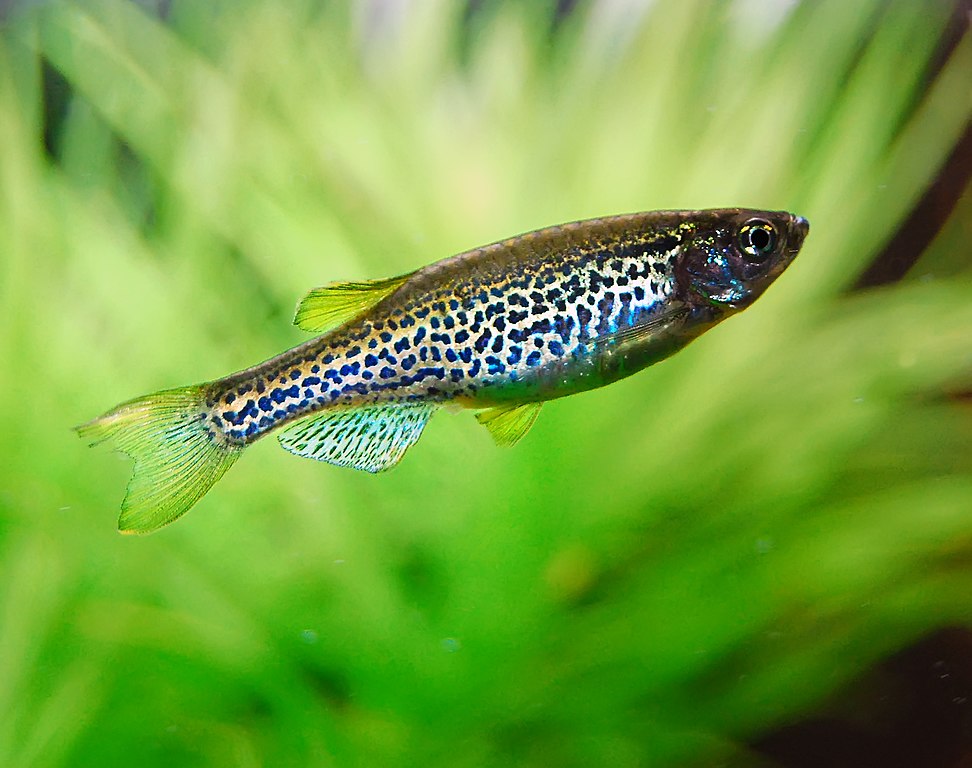
Key Information
The Leopard Danio (Danio rerio var. frankei) is a captivating freshwater fish that boasts a striking appearance. Its body is adorned with a vibrant golden-yellow hue, punctuated by a series of bold, irregular dark spots reminiscent of a leopard’s coat. These spots, which can range from deep brown to black, create a mesmerizing contrast against the fish’s shimmering scales, making it a true standout in any aquarium.
| Family | Cyprinidae |
| Price | $2 to $5 per fish |
| Common Names | Leopard Danio, Spotted Danio, Frankei Danio |
| Variants | Long-finned Leopard Danio |
| Ideal Tank Size | 20 gallons or larger |
| Water Parameters | Temperature: 64-77°F (18-25°C), pH: 6.5-7.5, Hardness: 5-12 dGH |
| Lifespan | 3 to 5 years |
| Full Size | 2 to 2.5 inches (5-6.5 cm) |
| Natural Environment | Streams and rivers in South Asia (India, Bangladesh, Nepal) |
| Behavior | Active, peaceful, schooling fish |
| Habitat Preference | Mid-level swimmer, prefers well-planted tanks with open swimming areas |
| Aquarium Decoration | Plants, rocks, driftwood, open swimming space |
| Ideal Tank Mates | Other peaceful, similarly-sized fish (e.g., Neon Tetras, Guppies, Cherry Barbs) |
| Fish to Avoid | Large, aggressive fish that may prey on Leopard Danios |
| Best Foods/Diet | Omnivorous; high-quality flakes, pellets, frozen or live foods (brine shrimp, daphnia) |
| Disease | Susceptible to common freshwater fish diseases if water quality is poor |
| Sex-switch | No, Leopard Danios do not change sex |
| Gender Differences | Males are slimmer and more colorful; females are larger and rounder when mature |
| Care Level | Easy |
| Breeding Level | Easy; egg-scatterers that spawn readily in the right conditions |
Ideal Tank Mates
When considering ideal tank mates for Leopard Danios (Danio rerio var. frankei), it’s essential to choose species that share similar water parameters, temperament, and habitat preferences. Leopard Danios are active, peaceful, and enjoy the company of their own kind, thriving in schools of six or more individuals. They are mid-level swimmers that appreciate well-planted aquariums with plenty of open swimming space.
Compatible tank mates should be non-aggressive, similarly sized, and adaptable to the same water conditions as Leopard Danios. It’s crucial to avoid larger, more aggressive fish that may view the small Danios as prey. By carefully selecting the right tank mates, you can create a harmonious and visually appealing community aquarium that showcases the beauty and activity of Leopard Danios.
Here are 15 ideal tank mates for Leopard Danios, along with explanations for their compatibility:
Neon Tetras (Paracheirodon innesi)
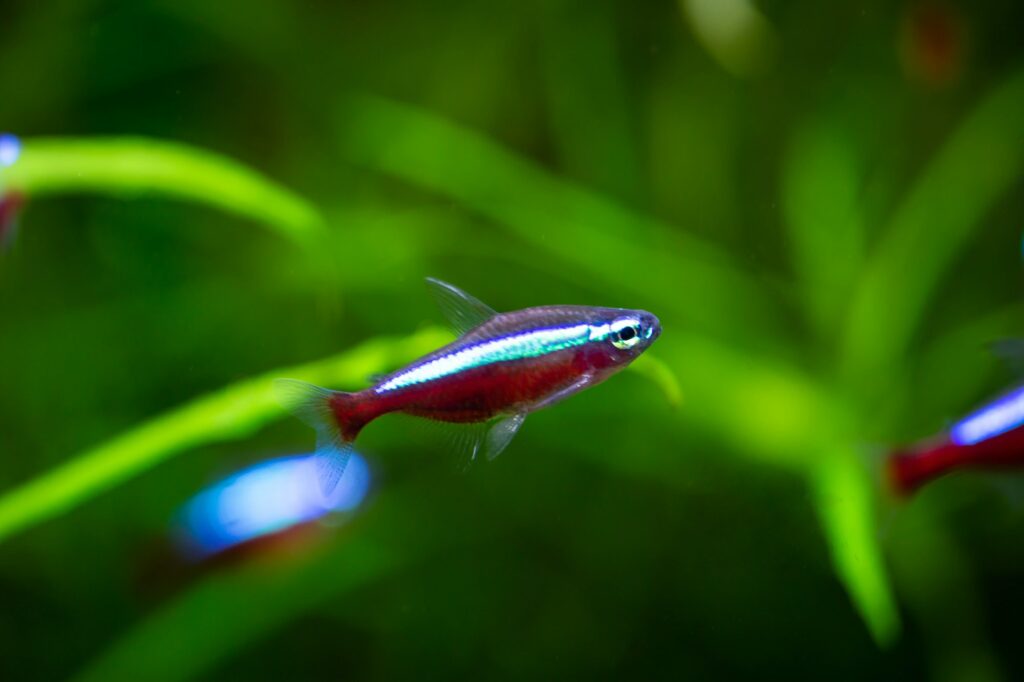
Neon Tetras are small, peaceful, and colorful schooling fish that share similar water preferences with Leopard Danios. Their vibrant blue and red stripes complement the Danios’ spotted patterns, creating a visually stunning display.
Cherry Barbs (Puntius titteya)
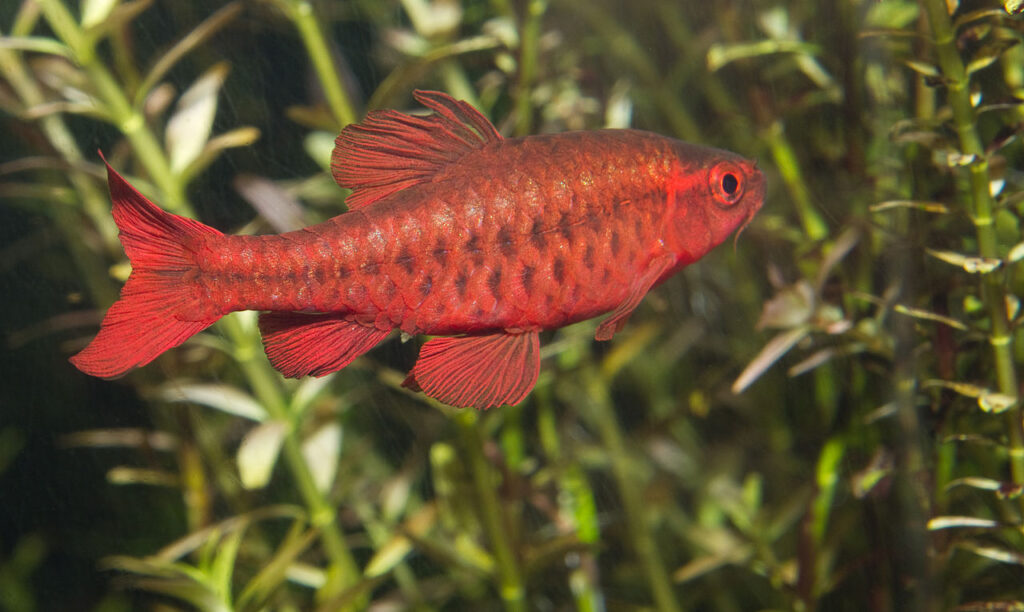
Cherry Barbs are active, peaceful, and adaptable fish that thrive in similar water conditions as Leopard Danios. Their bright red coloration adds a pop of color to the aquarium, and their lively nature matches the Danios’ energy.
Harlequin Rasboras (Trigonostigma heteromorpha)

Harlequin Rasboras are small, peaceful schooling fish that prefer the same water parameters as Leopard Danios. Their unique triangular shape and vibrant orange and black coloration make them an attractive addition to the community tank.
White Cloud Mountain Minnows (Tanichthys albonubes)
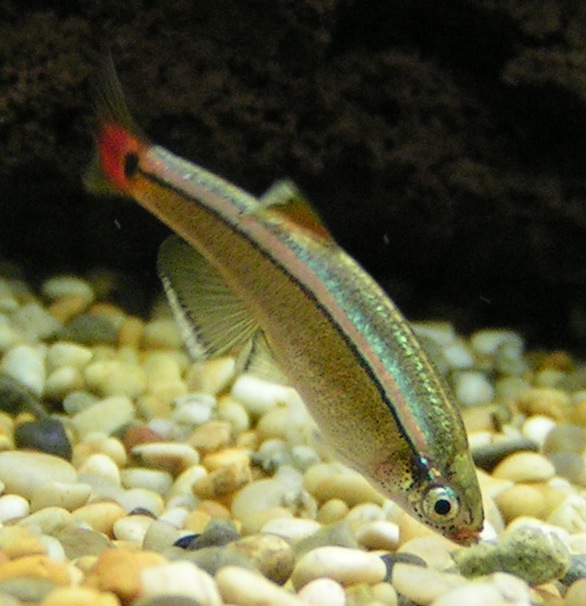
White Cloud Mountain Minnows are hardy, peaceful, and adaptable fish that enjoy cool water temperatures, making them an excellent match for Leopard Danios. Their silvery bodies and red fins create a subtle yet striking contrast to the Danios’ spots.
Zebra Danios (Danio rerio)
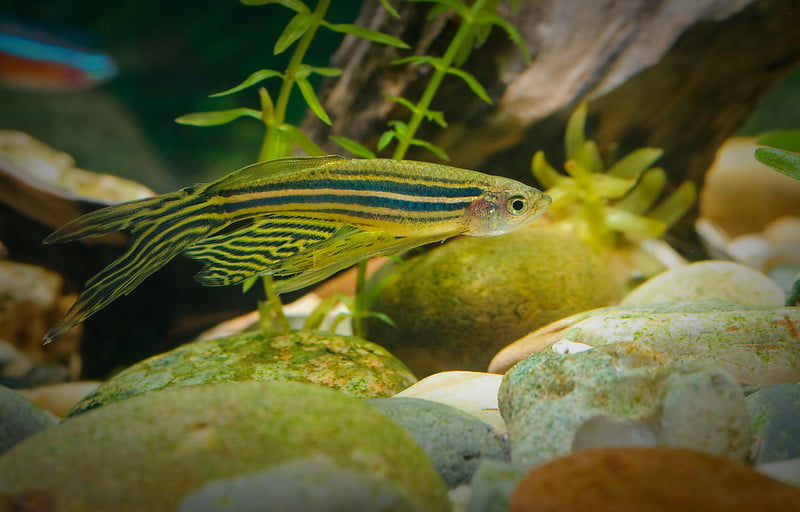
As the wild counterpart of Leopard Danios, Zebra Danios are an obvious choice for a compatible tank mate. They share the same water preferences, active nature, and peaceful temperament, making them a perfect companion for their spotted relatives.
Guppies (Poecilia reticulata)
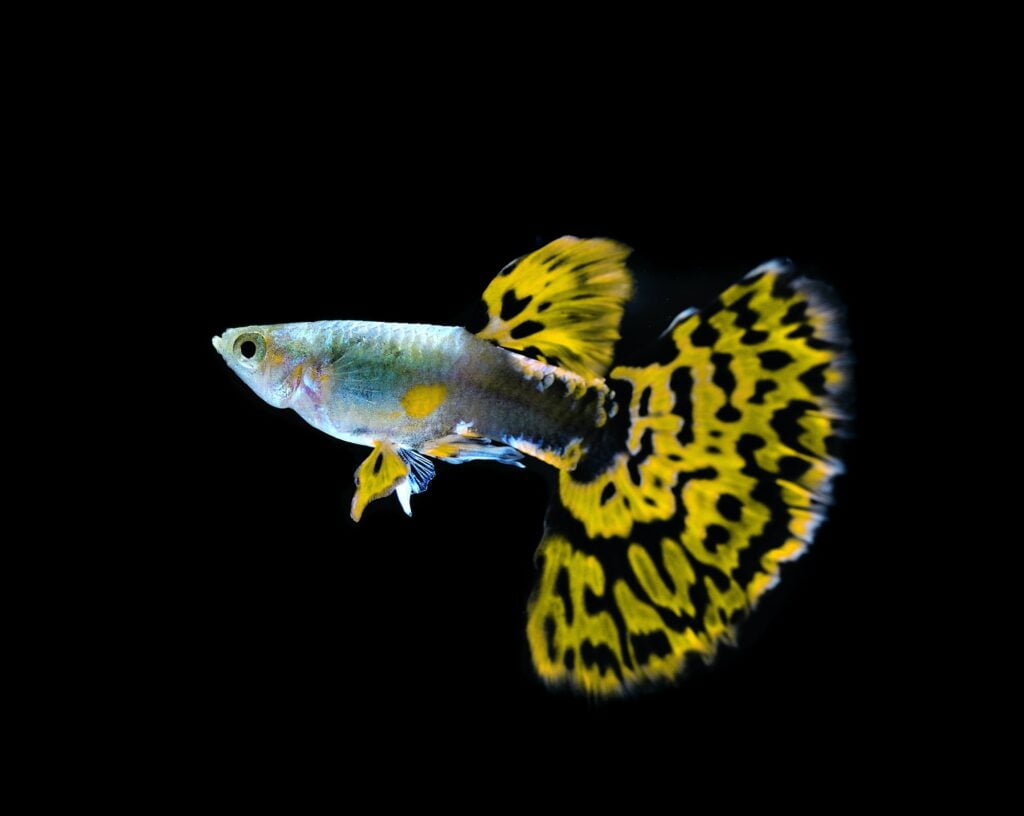
Guppies are colorful, peaceful livebearers that adapt well to the same water conditions as Leopard Danios. Their wide variety of colors and patterns can add visual interest to the aquarium, while their calm demeanor ensures a harmonious coexistence with the active Danios.
Platies (Xiphophorus maculatus)
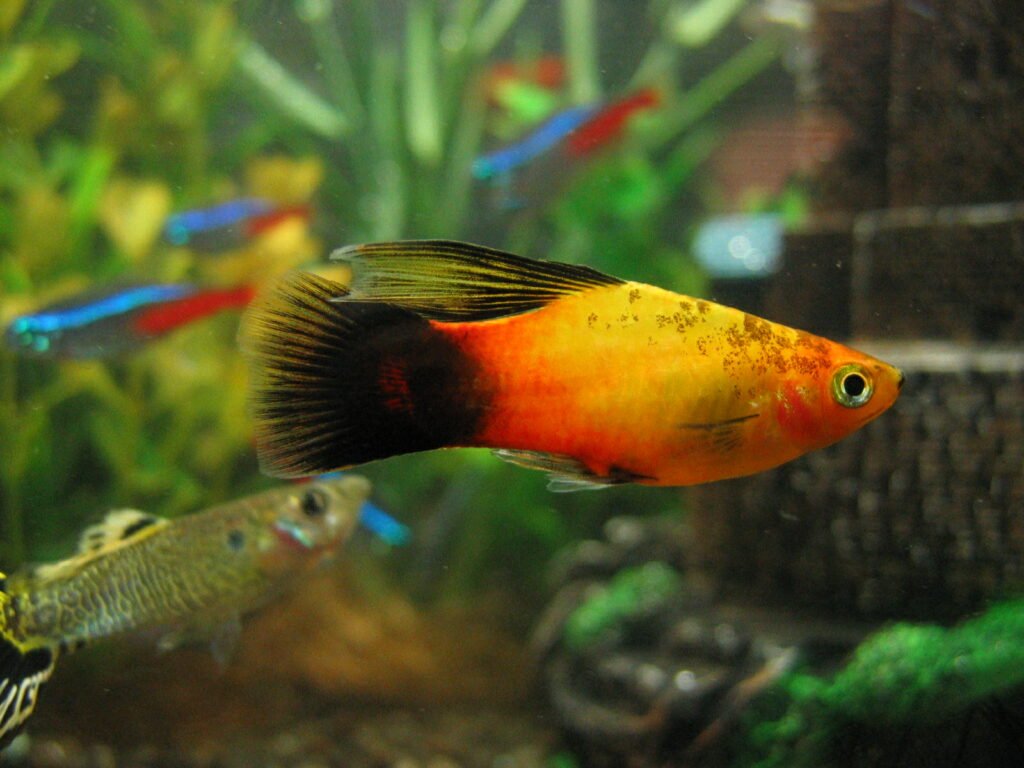
Platies are another colorful livebearer that thrives in similar water conditions as Leopard Danios. Their laid-back nature and adaptability make them an ideal tank mate, and their various color morphs can enhance the overall aesthetics of the aquarium.
Corydoras Catfish (Corydoras spp.)
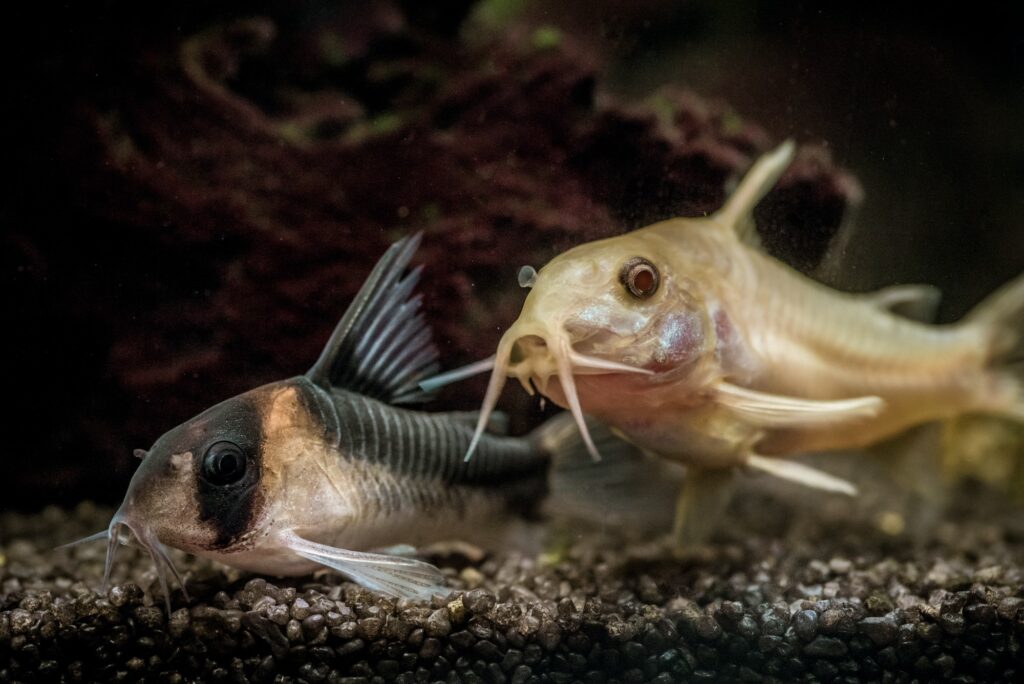
Corydoras Catfish are peaceful bottom-dwellers that help keep the aquarium clean by scavenging for leftover food. They are adaptable to a wide range of water conditions and add a unique dimension to the tank with their adorable appearance and fascinating behavior.
Kuhli Loaches (Pangio kuhlii)
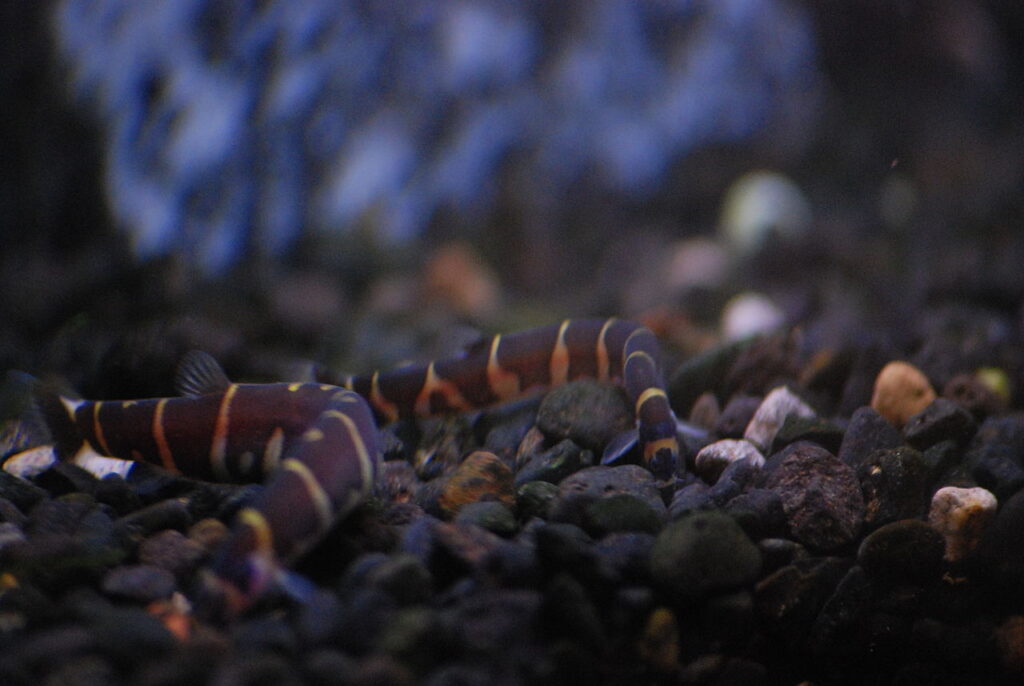
Kuhli Loaches are nocturnal, eel-like fish that peacefully coexist with Leopard Danios. They spend most of their time hiding among plants and decorations, emerging at night to search for food. Their unique appearance and secretive nature add an element of intrigue to the aquarium.
Otocinclus Catfish (Otocinclus spp.)
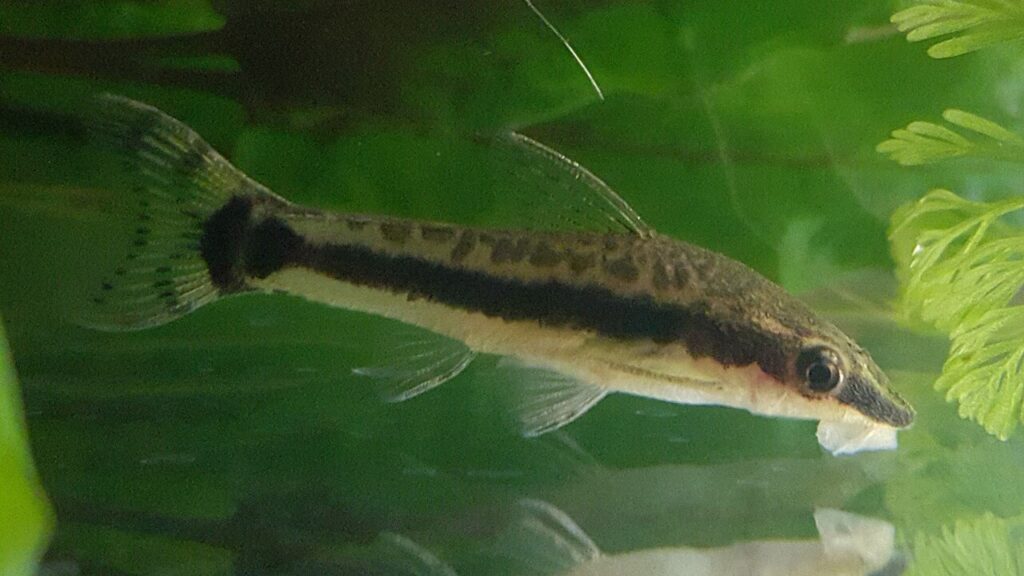
Otocinclus Catfish are small, peaceful algae-eaters that help maintain a clean aquarium by grazing on algae growth. They are adaptable to various water conditions and make an excellent addition to a community tank with Leopard Danios.
Endler’s Livebearers (Poecilia wingei)
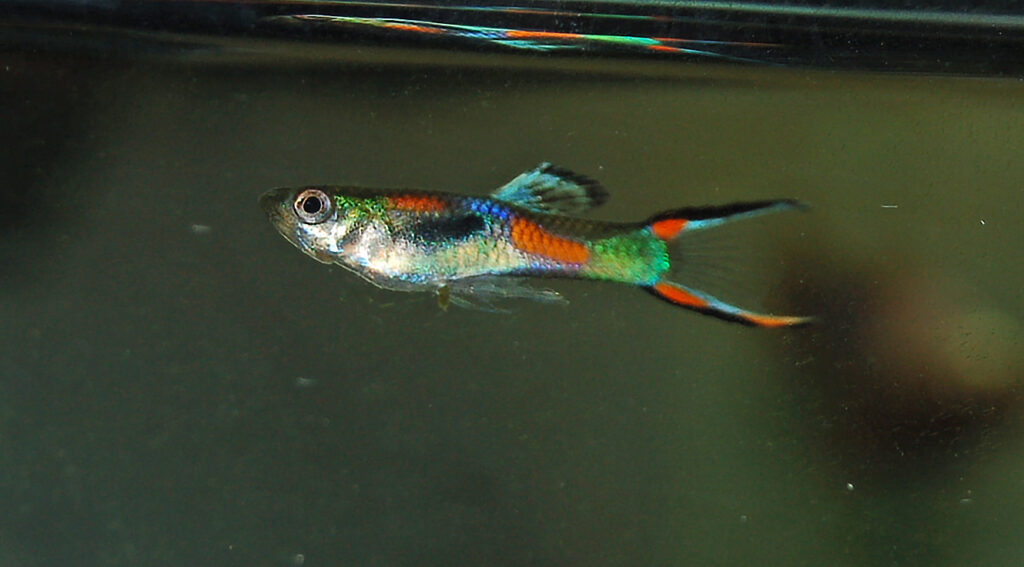
Endler’s Livebearers are small, colorful fish that share similar water preferences with Leopard Danios. Their vibrant colors and peaceful nature make them an attractive and compatible tank mate, adding visual variety to the aquarium.
Ember Tetras (Hyphessobrycon amandae)
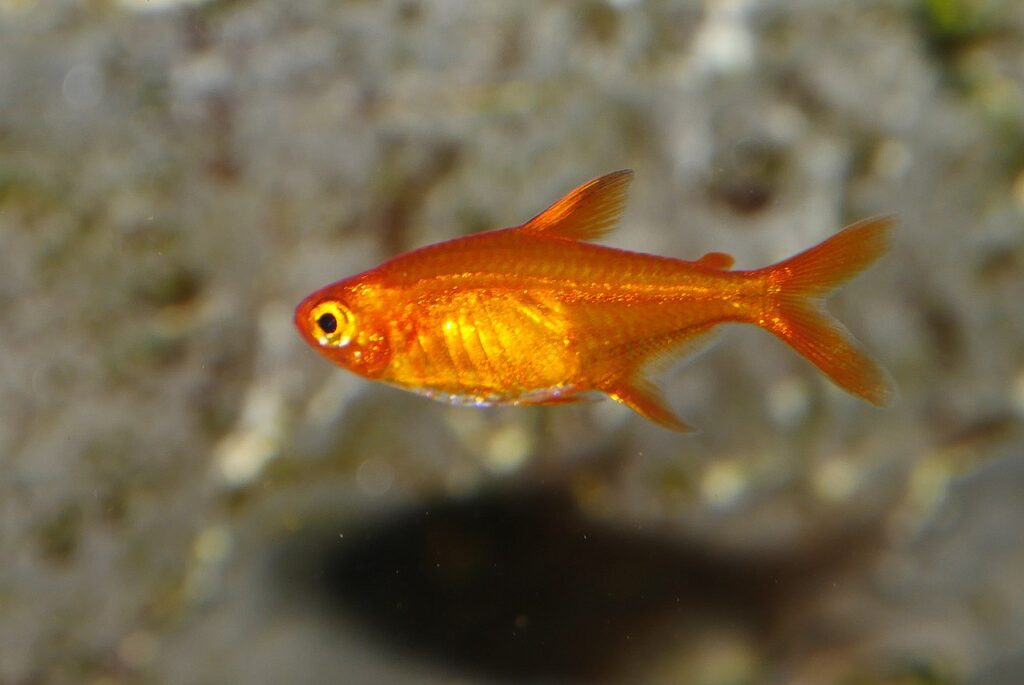
Ember Tetras are tiny, peaceful schooling fish that thrive in the same water conditions as Leopard Danios. Their stunning orange-red coloration creates a beautiful contrast against the Danios’ spots, making for a visually appealing display.
Pygmy Corydoras (Corydoras pygmaeus)
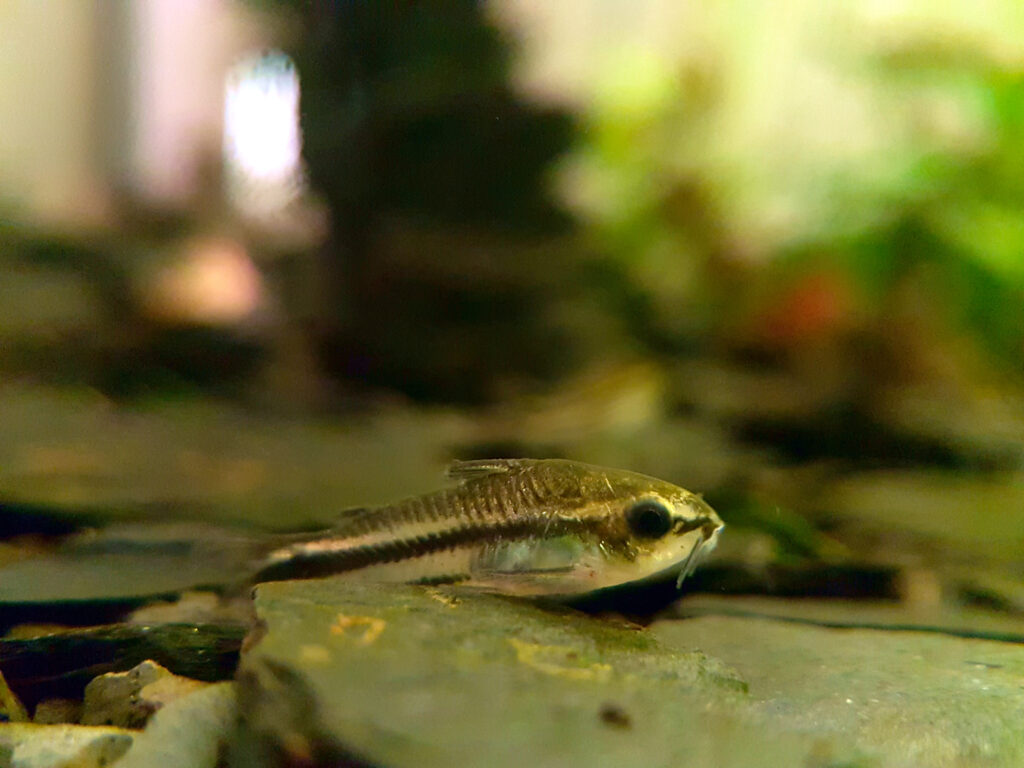
Pygmy Corydoras are miniature versions of the popular Corydoras Catfish, making them an excellent choice for smaller aquariums housing Leopard Danios. These peaceful bottom-dwellers help keep the substrate clean and add a charming presence to the tank.
Dwarf Gouramis (Trichogaster lalius)
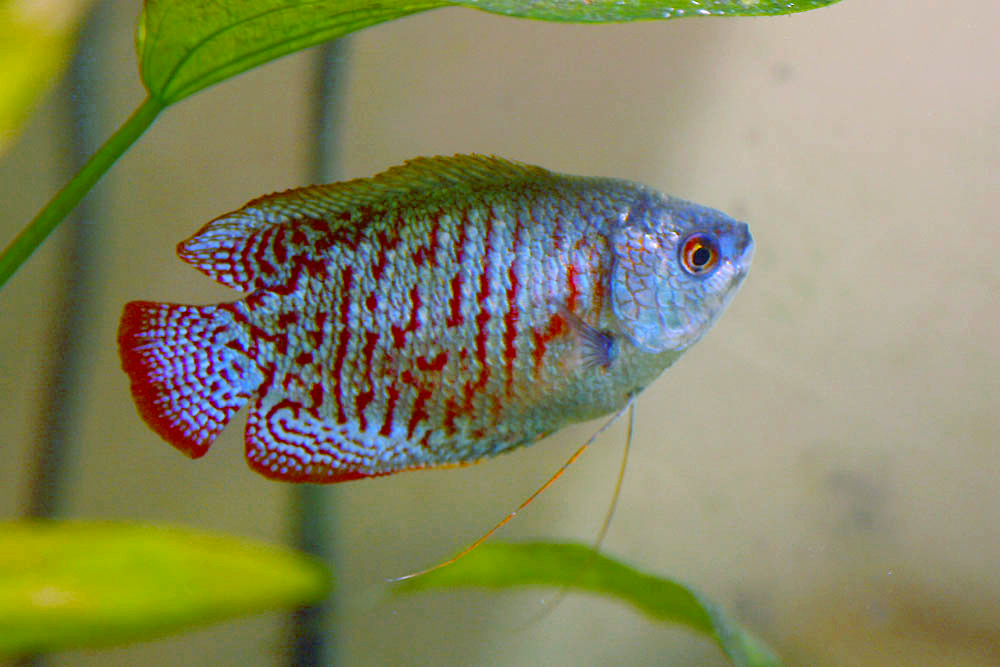
Dwarf Gouramis are colorful, peaceful labyrinth fish that can coexist harmoniously with Leopard Danios. They occupy the upper levels of the aquarium, providing a stunning visual contrast to the mid-level swimming Danios.
Siamese Algae Eaters (Crossocheilus siamensis)
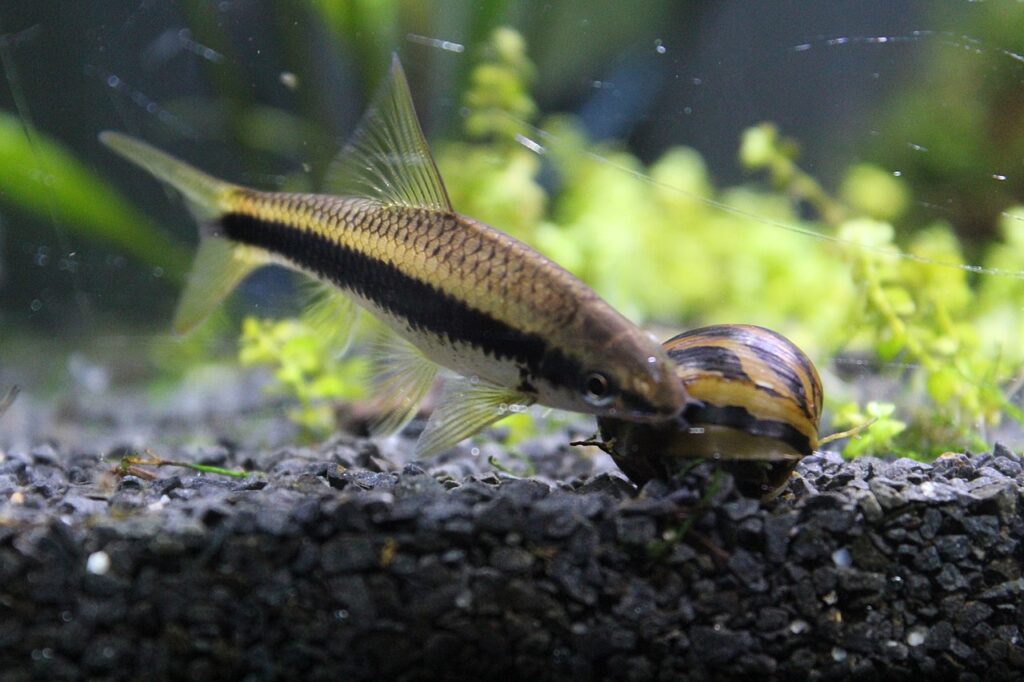
Siamese Algae Eaters are efficient algae-eaters that peacefully share the aquarium with Leopard Danios. These active fish help control algae growth, maintaining a clean and healthy environment for all tank inhabitants.
FAQs
How many Leopard Danios should I keep in my aquarium?
Leopard Danios are schooling fish that thrive in groups of six or more individuals. Keeping them in larger numbers helps reduce stress, promotes natural behavior, and creates a more visually appealing display in your aquarium.
Can Leopard Danios be kept with other Danio species?
Yes, Leopard Danios can be kept with other Danio species, such as Zebra Danios or Pearl Danios, as they share similar water requirements and temperaments. Mixing different Danio species can create an attractive and dynamic community aquarium.
Are Leopard Danios suitable for planted aquariums?
Leopard Danios are an excellent choice for planted aquariums, as they appreciate the natural cover and hiding spots provided by aquatic plants. However, be sure to choose hardy, fast-growing plants that can withstand the Danios’ active swimming and occasional nibbling.
How often should I feed my Leopard Danios?
Feed your Leopard Danios small amounts of food two to three times a day. Offer a varied diet consisting of high-quality flakes, pellets, and occasional treats of frozen or live foods to ensure they receive balanced nutrition.
Do Leopard Danios jump out of the aquarium?
Like many active fish, Leopard Danios may jump out of the aquarium if given the opportunity. To prevent this, ensure your tank has a tight-fitting lid or cover that allows proper ventilation while keeping your fish securely inside.
How can I tell the difference between male and female Leopard Danios?
Male Leopard Danios are typically slimmer and more colorful than females. When viewed from above, mature females often appear larger and rounder in the belly area, especially when carrying eggs.
Can Leopard Danios be bred in captivity?
Yes, Leopard Danios are relatively easy to breed in captivity. To encourage spawning, provide a separate breeding tank with slightly acidic water, a spawning mop or fine-leaved plants, and a nutritious diet. The eggs will hatch in a few days, and the fry can be fed newly hatched brine shrimp or specially formulated fry food.
How long do Leopard Danios typically live?
With proper care and optimal living conditions, Leopard Danios can live for 3 to 5 years in captivity. Regular tank maintenance, a well-balanced diet, and a stress-free environment all contribute to their longevity.